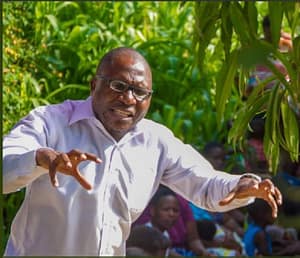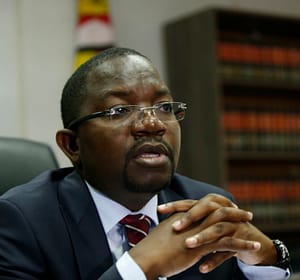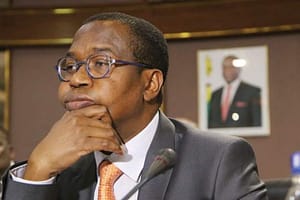Cyril is “liable” for Marikana

Besieged President Cyril Ramaphosa’s woes worsened this week when the Johannesburg High Court found that a case can be made that he “participated in, masterminded and championed the toxic collusion” between mining company Lonmin and the SA Police Service (SAPS) that led to the Marikana massacre.
The ruling has opened a door for the 349 surviving Marikana mine workers to hold Ramaphosa personally liable for compensation for their injuries during the 2012 carnage near Rustenburg, North West.
Workers want workers want R1 billion
The mine workers had applied to court to claim damages against Ramaphosa and Sibanye Stillwater (which acquired Lonmin a few years after the massacre) for the injuries suffered during the incident that made global headlines in August 2012, when police shot and killed 34 striking Lonmin employees. The complainants are among the striking workers who were wounded in the hail of bullets and subsequently arrested.

They are seeking nearly R1 billion in compensation from Ramaphosa and Sibanye.
In defence, Ramaphosa raised eight grounds of exception, citing why the application should be dismissed, while Sibanye raised 10. In terms of the notice of exceptions, Ramaphosa and Sibanye wanted the mine workers to remove from the application allegations that were “vague and embarrassing”.
During the proceedings, each exception was probed and findings made. On Friday, Judge Frits van Oosten upheld four of the president’s exceptions, but rejected one, in which he found that Ramaphosa had taken part in, planned and endorsed the cooperation between Lonmin mine in Marikana and the SAPS, which had culminated in the deaths, injuries, arrests and detention of the striking mine workers.
“I agree, and it is accordingly my finding, that the plaintiffs have satisfied the test of legal causation,” said Van Oosten in a ruling which enables the surviving mine workers to hold Ramaphosa, who was then the ANC’s deputy president and a Lonmin board member, personally liable for what they suffered. He became the country’s deputy president in 2014.
Van Oosten said Ramaphosa had submitted that the pressure allegedly exerted and transmitted to ground level did not satisfy the requirement of legal causation in delict, adding that causation entailed a two-stage test. However, the mine workers had fully set out the steps that Lonmin senior management would not have taken, but for the intentional (or, alternatively, negligent) conduct of Ramaphosa in collusion with the third defendant, the South African government.
“As counsel for the plaintiffs was at pains to emphasise, whether the plaintiffs will be able to prove those allegations at the trial is not relevant for the present purposes. I am in agreement with counsel for the plaintiffs that the allegations, as they stand, do satisfy the test for factual causation,” ruled the judge.
The main essence of the ruling is that a case can be made that Ramaphosa, Lonmin and the SAPS colluded in the events that led to the killings. While the court ruling could not find them directly responsible for the deaths, it found that they were complicit in the events leading up to them.
Andries Nkome, the mine workers’ lawyer said Ramaphosa is responsible to compensate the mine workers.
He said:
This being the case, our clients feel strongly that we must review the Farlam commission [the Marikana Commission of Inquiry]. It was impossible for the then national police commissioner Riah Phiyega, who had been hardly 60 days in office, to ‘mastermind’ a massacre, more so since she was not a Lonmin shareholder or an ANC national executive member. Ramaphosa, who wore all these hats, stood to [suffer] a personal loss if the rock drill operators succeeded against the company and earned more.
The ruling could not have come at a worse time for Ramaphosa, who is currently under pressure following what has become known as the #Farmgate scandal.
On June 1, Arthur Fraser – former director-general of the State Security Agency – opened a criminal case against Ramaphosa and his chief bodyguard, Major General Wally Rhoode. The charges included money laundering, kidnapping and torture.
This followed what Fraser alleged was money valued at between $4 million (R60 million) and $8 million in cash that had been concealed in the furniture of the president’s residence on his Phala Phala farm in Limpopo and was stolen by a domestic worker who conspired with members of a crime syndicate to commit the theft.
The matter is currently under investigation by the Hawks and the Public Protector. Parliament is also awaiting the Public Protector’s report before deciding on a course of action. Opposition parties have called for Ramaphosa’s resignation, while his opponents in the ANC are urging him to step aside ahead of the party’s national conference in December.
Van Oosten said the surviving mine workers should deliver a notice of amendment of their claim within six weeks. He disagreed with Ramaphosa’s defence that the surviving mine workers were relying on a convoluted chain of events, in which he was “far removed from the eventual harm that the plaintiffs suffered”.
Lonmin was also successful in seven of its exceptions. The remainder of Ramaphosa’s and Sibanye’s exceptions were postponed for hearing on a date to be determined following the close of pleadings in the action.
In the initial application, which must now be amended as per the court order, the 329 plaintiffs had demanded payment of R977 319 735 from both the defendants, “in respect of ‘patrimonial and compensable loss’ suffered”. Alternatively, the plaintiffs claimed that Ramaphosa and Lonmin had colluded and should therefore pay an amount of R164 500 000, in respect of damages.
“The money is not all that important. What is important is for the president to apologise and the workers might review their position,” said Andries Nkome, the mine workers’ lawyer.
However, the court agreed with Ramaphosa that his proposal for “concomitant action” was not a suggestion that the workers be murdered.
“I do not agree. The argument assumes, without proffering the grounds in support thereof, that the proposal was made that the workers be murdered. Having carefully read and considered the email communications, I have not been able to find any support for the inference that the murder of the workers was intended or foreseen,” ruled Van Oosten.
He said that “Ramaphosa’s characterisation of the events as dastardly criminal requiring concomitant action must be interpreted in the light of the communications as a whole”.
“Whether he was correct in holding and expressing the view is not of relevance in deciding the issue. To infer, from the characterisation and proposal of concomitant action, that the workers were murderous and in turn ought to be murdered is not only far-fetched, but irreconcilable within the context of the email communication contents as a whole.
“Concomitant action in regard to criminal conduct, however benevolently interpreted, does not in any way imply murder, or entail ‘violent killings and/or serious injuries to many human beings, including the plaintiffs’.”
The court also disagreed that Ramaphosa, in his capacity then as a director of Lonmin, had had a duty to ensure that the management of the company took appropriate measures to protect its employees, including the plaintiffs, from undue physical harm and violence, including state-sponsored violence.
The claim had included that he had also had “the duty to take reasonable steps to ensure that Lonmin should engage and/or negotiate with the strikers so as to avoid or minimise the temptation on the part of the state and capital to resort to unnecessary violence, as has been his own experience; the duty to ensure that the employees of Lonmin, including the plaintiffs, were fairly remunerated, adequately and not in accordance with the apartheid wage structure, which he had criticised in his earlier life as a trade unionist”.
Nkome said the court ruling called for the amendment of the mine workers’ action, “but our opinion is that we’ll succeed in holding Ramaphosa personally liable for compensating our clients because the court found that he was the ‘mastermind’ behind the Marikana massacre”.
“This being the case, our clients feel strongly that we must review the Farlam commission [the Marikana Commission of Inquiry]. It was impossible for the then national police commissioner Riah Phiyega, who had been hardly 60 days in office, to ‘mastermind’ a massacre, more so since she was not a Lonmin shareholder or an ANC national executive member. Ramaphosa, who wore all these hats, stood to [suffer] a personal loss if the rock drill operators succeeded against the company and earned more.”
The Farlam commission was of the view that Ramaphosa could not be said to have been the cause of the massacre
It stated: “Objective evidence shows that Ramaphosa was not aware of the decision on Wednesday August 15 to move to the tactical option.”
Commission chairperson, retired Judge Ian Farlam, agreed with the commission’s evidence leaders that Ramaphosa may have worn several hats during the run-up to the killings, as he was an ANC national executive member, a Lonmin director and a 9% shareholder in the company. However, all “had an interest in putting an end to the killings that had taken place”.
However, the commission agreed with the evidence leaders that Ramaphosa had privileged access to Cabinet members, whom he texted or called at all hours of the day or night to do the bidding of Lonmin executives.
The presidency declined to comment because it had not seen the judgment.
–City Press






